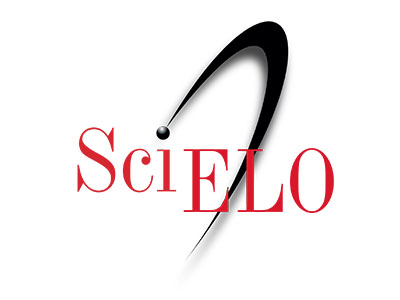Non-orthogonal multiple access technique performance in a Long-Term Evolution mobile communication system
DOI:
https://doi.org/10.37135/ns.01.05.07Keywords:
ATSC 3.0, LDM, LTE, NOMA, spectral efficiencyAbstract
The growing demand for data through mobile networks and the search for more efficient services by users have led to new techniques that increase spectral efficiency. Non-orthogonal multiple access (NOMA) is one of the techniques being evaluated within the 3GPP (Third Generation Partnership Project). It provides services to multiple users through potential multiplexing. This research evaluates the performance of NOMA in LTE (Long Term Evolution) systems through physical layer simulations in relation to conventional orthogonal multiple access technologies TDM (Time Division Multiplexing) and FDM (Frequency Division Multiplexing). The profits obtained will be compared with those published in the Advanced Television Systems Committee (ATSC) 3.0 bibliography. The results show that NOMA is better than TDM when a low rate is used in the mobile receiver. An average rate in the fixed receiver showed gains of 3.35 and 0.25 respectively.
Downloads
References
Advanced Television Systems Committee Standard. (2017). Physical layer Protocol (A/322:2017). Recuperado de https://www.atsc.org/wp-content/uploads/2016/10/A322-2017a-Physical-Layer-Protocol.pdf
Eizmendi, I., Velez, M., Gómez-Barquero, D., Morgade, J., Baena-Lecuyer, V., Slimani, M., & Zoellner, J. (2014). DVB-T2: The second generation of terrestrial digital video broadcasting system. IEEE transactions on broadcasting, 60(2), 258-271.https://doi.org/10.1109/TBC.2014.2312811
European Telecommunications Standards Institute. (2009). LTE; Evolved Universal Terrestrial Radio Access (E-UTRA); Physical layer procedures. (ETSI TS 136 213 V8.8.0) Recuperado de https://www.etsi.org/deliver/etsi_ts/136200_136299/136213/08.08.00_60/ts_136213v080800p.pdf
European Telecommunications Standards Institute. (2013). LTE; Evolved Universal Terrestrial Radio Access (E-UTRA); Physical channels and modulation. (3GPP TS 36.211 V10.6.0 Release 10). Recuperado de
https://www.etsi.org/deliver/etsi_ts/136200_136299/136211/10.06.00_60/ts_136211v100600p.pdf.
European Telecommunications Standards Institute. (2017). LTE; Evolved Universal Terrestrial Radio Access (E-UTRA); Multiplexing and channel coding. (3GPP TS 36.212 V14.2.0 Release 14). Recuperado de
https://www.etsi.org/deliver/etsi_ts/136200_136299/136212/14.02.00_60/ts_136212v140200p.pdf
Fuentes, M. (2017). Non-Uniform Constellations for Next-Generation Digital Terrestrial Broadcast Systems (Tesis doctoral no publicada). Universitat Politècnica de València, Valencia, España. https://doi.org/doi:10.4995/Thesis/10251/84743
Garro, E., Gimenez, J., Park, S., & Gomez-Barquero, D. (2017). Scattered pilot performance and optimization for ATSC 3.0. IEEE Transactions on Broadcasting, 63 (1), 282-292.
https://doi.org/10.1109/TBC.2016.2630304.
GNU Operating System. (2018). GNU Lesser General Public License, version 2.1. Recuperado de
https://www.gnu.org/licenses/old-licenses/lgpl-2.1.html.
Gómez-Barquero, D., Douillard, C., Moss, P., & Mignone, V. (2014). DVB-NGH: The next generation of digital broadcast services to handheld devices. IEEE Transactions on Broadcasting, 60(2), 246-257. https://doi.org/10.1109/TBC.2014.2313073.
Hartung, F., Horn, U., Huschke, J., Kampmann, M., Lohmar, T., & Lundevall, M. (2007). Delivery of broadcast services in 3G networks. IEEE Transactions on Broadcasting, 53(1), 188-199.
https://doi.org/10.1109/TBC.2007.891711.
Huschke, J., & Phan, M. (2013). An overview of the cellular broadcasting technology eMBMS in LTE. In D. Gomez-Barquero (Ed.) Next Generation Mobile Broadcasting (pp. 223-252). London: Taylor & Francis Group.
Institute of Telecommunications Vienna University of Technology. (2016). LTE Simulators LTE-A Link Level Simulator Documentation, V1.4 Q2. Recuperado de http://www.nt.tuwien.ac.at/ltesimulator.
Mehlführer, C., Wrulich, M., Ikuno, J. C., Bosanska, D., & Rupp, M. (2009). Simulating the long-term evolution physical layer. In 17th European signal processing conference (EUSIPCO 2009) (pp. 1471-1478). Glasgow, Scotland https://publik.tuwien.ac.at/files/PubDat_175708.pdf
Montalban, J., Rong, B., Wu, Y., Zhang, L., Angueira, P., & Velez, M. (2013). Cloud transmission frequency domain cancellation. In IEEE International Symposium on Broadband Multimedia Systems and Broadcasting (BMSB) (pp. 1-4). London. https://doi.org/ 10.1109/BMSB.2013.6621769.
Montalban, J., Zhang, L., Gil, U., Wu, Y., Angulo, I., Salehian, K., ... & Angueira, P. (2014). Cloud transmission: System performance and application scenarios. IEEE Transactions on Broadcasting, 60(2), 170-184.
https://doi.org/10.1109/TBC.2014.2304153.
Open Source Intitiative. (n. d.). The MIT License. Recuperado de
https://opensource.org/licenses/MIT.
Park, S. I., Lee, J. Y., Myoung, S., Zhang, L., Wu, Y., Montalbán, J., ... & Hur, N. (2016). Low complexity layered division multiplexing for ATSC 3.0. IEEE Transactions on Broadcasting, 62(1), 233-243. https://doi.org/10.1109/TBC.2015.2492459.
Park, S., Lee, J., Myoung, S., Zhang, L., Wu, Y., Montalbán, J., ... & Kim, J. (2015). Low complexity layered division multiplexing for ATSC 3.0. IEEE Transactions on broadcasting, 62(1), 233-243.
https://doi.org/10.1109/TBC.2015.2492459.
Rupp, M., Schwarz, S., & Taranetz, M. (2016). The Vienna LTE-advanced simulators. Singapore: Springer. Recuperado de https://link.springer.com/book/10.1007%2F978-981-10-0617-3.
Wu, Y., Rong, B., Salehian, K., & Gagnon, G. (2012). Cloud transmission: A new spectrum-reuse friendly digital terrestrial broadcasting transmission system. IEEE Transactions on Broadcasting, 58(3), 329-337. https://doi.org/10.1109/TBC.2012.2199598.
Zhang, L., Li, W., Wu, Y., Wang, X., Park, S. I., Kim, H. M., & Montalban, J. (2016). Layered-division-multiplexing: Theory and practice. IEEE Transactions on Broadcasting, 62(1), 216-232.







